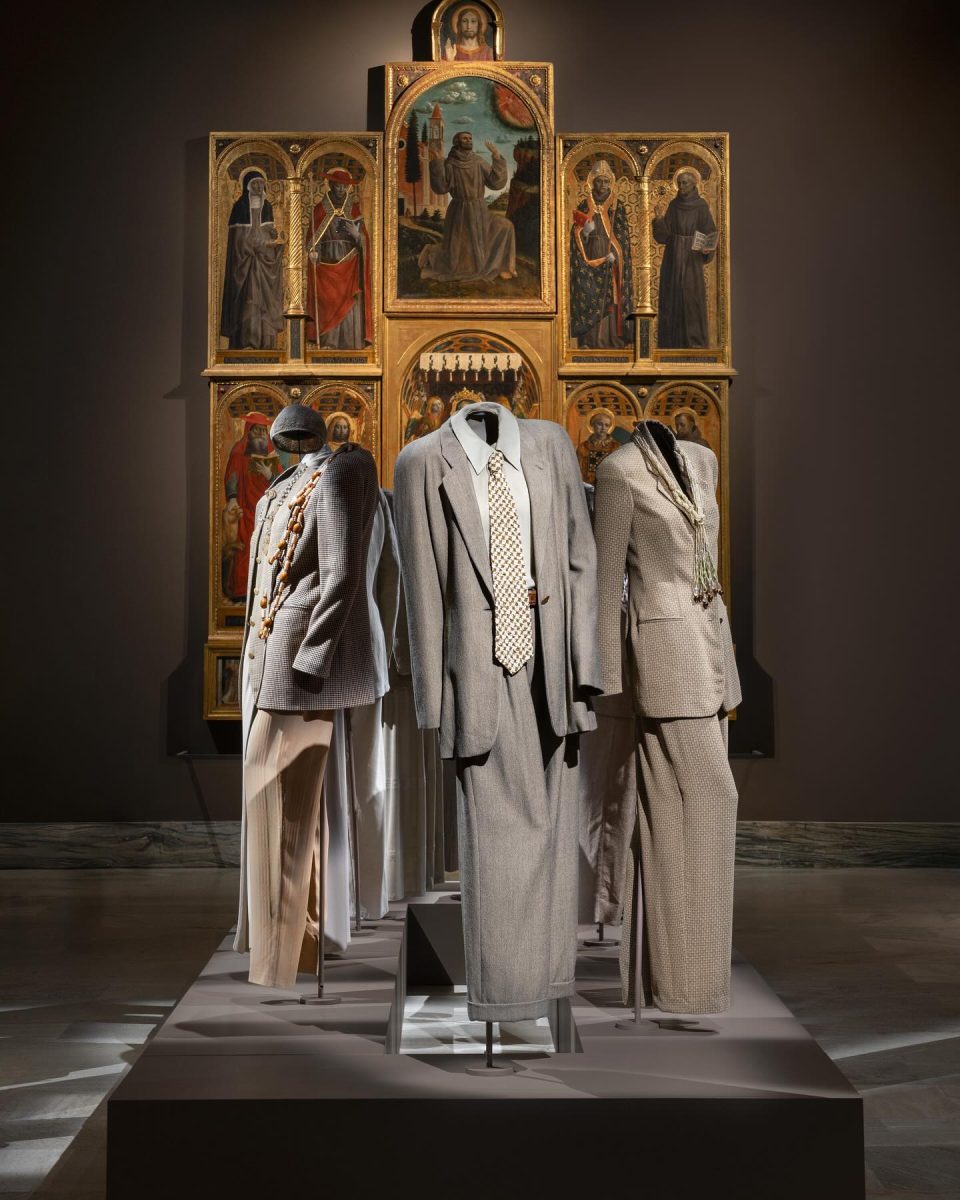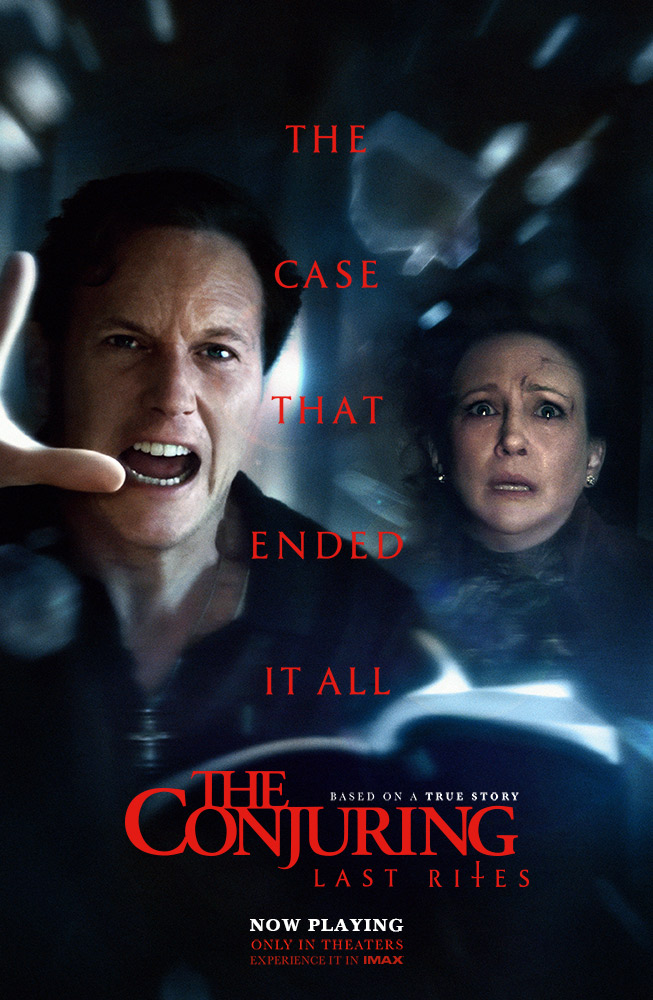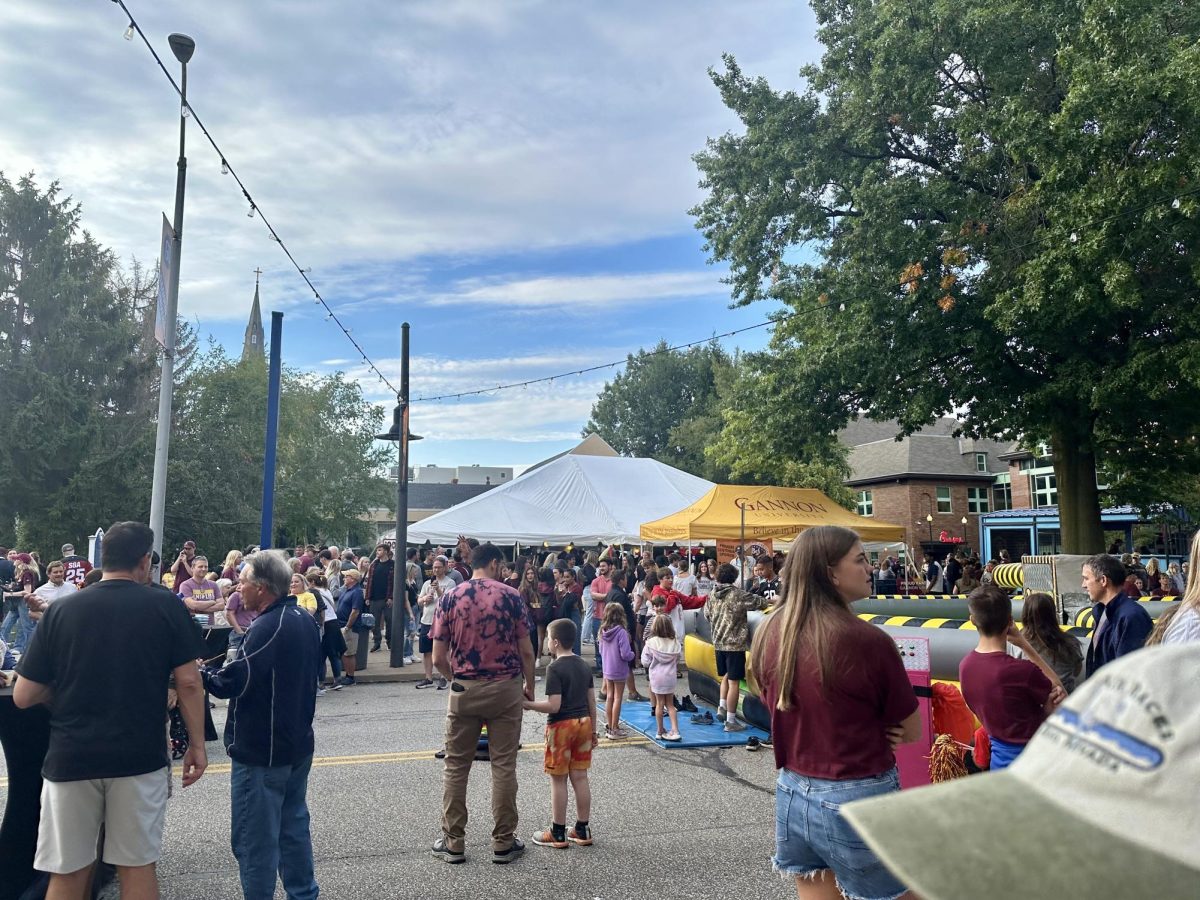The bottom of the television screen reads “#inthemoment,” advertising the new Lincoln MKC starring Matthew McConaughey. During the commercial, the 2014 Oscar winner talks about going back in order to move forward. The gist of the message is that sometimes in order to move forward, you have to go back to the right place.
Gannon University’s Schuster Theatre is the place where Bob Dobiesz and the Rev. Shawn Clerkin can look back to, and for Paula Barrett and Jacki Kubiak, the Schuster Theatre has been their destination for moving forward.
According to the Gannon archives, in April of 1995, Gannon’s Theatre and Communication Arts faculty members moved into a newly renovated building at 620 Sassafras St. The renovations for the Schuster Theatre cost $900,000, more than four times the $200,000 amount Gannon spent in 1983 to purchase the building.
Before becoming Gannon-owned, the Schuster Theatre building hosted the First Church of Christ Scientist, where worship of the faith took place since the year 1922.
Between the time of 1983 and 1995, Gannon used the building for academic purposes, such as holding the physician assistant program, Graduate Studies Office, Office of Graduate and Adult Academic Services, the School of Health Sciences and the Cultural Diversity Center.
The Schuster Theatre, eager to break in its new stage, premiered two theater productions during the summer of 1995. These productions were titled “The Fantasticks” and “The Heidi Chronicles,” and were the first shows performed to open the newly renovated theater.
Dobiesz, assistant director and librarian at the Nash Library, as well as the Gannon head archivist, performed in two productions held at the Schuster Theatre as a faculty member in the ‘90s and early 2000s.
“’Hair’ was my favorite play I was a part of at the Schuster Theatre on Sass,” Dobiesz said, reminiscing about the production that took place in the year 2000.
Dobiesz had little to say about his role, but enjoyed it nonetheless.
“I played Herbert Hoover, yes like the President, who was married to Margret Mead,” he said.
During Dobiesz’s time at Gannon as a student, he had issues with stage fright. His first play at the old Schuster Theatre building, located where the current Waldron Campus Center is located, was “Jesus Christ Superstar.” Playing the role of Annus, Dobiesz has good and bad memories of the experience, but enjoyed it nonetheless.
“I’m a good singer, which nobody would have guessed at the time, but I couldn’t even get a note out during my audition,” he said.
However, this small speed bump did not discourage Dobiesz in his acting endeavors. Since performing at the Schuster Theatre, Dobiesz has been cast in the independent films “Blood Mercury,” “There Are Now Goodbyes,” “Skull Forest,” “Bridal Party Massacre,” “Ninja: Prophecy of Death,” “Wendigo: Bound by Blood” and “Warriors of the Apocalypse.”
Having experiences in the theater and on film, Dobiesz said he believes he has learned more during his time performing in the theater, especially under the direction of Clerkin.
“I was able to learn a lot while being directed under Father Shawn,” he said. “Not only does he direct phenomenally, but he was a teacher throughout the entire process.”
With a focus on theater education for most of his acting career, it is not surprising that Clerkin takes any opportunity he has to teach. Clerkin graduated from Gannon in 1986, and after his time there as a student, he continued his education in the theater at Bexley Hall Seminary, Virginia Commonwealth University for a Master of Fine Arts in Theatre Directing.
From his acting experiences, it is not hard to tell Clerkin cherishes each moment, but the Royal National Theatre in Great Britain is a memory that separates itself from the rest of his time learning about the craft. Being among renowned actors like Sir Ian McKellan, Janet McTeer and Darlene Hunt, Clerkin had to become a human sponge in order to absorb all the wisdom and knowledge these individuals have on acting.
Clerkin described his favorite instructor. “All of the instructors and students were great,” Clerkin said. “I was the only nonprofessional actor taking the summer course and it was very nice to be able to work with other serious actors. But if I had to choose, I would say Janet McTeer.”
During a scene rehearsal of “Julius Caesar,” Clerkin was standing over Caesar’s body saying his lines. He recalled being “focused” and “thinking” about being sad about Caesar’s death, and working really hard at it at that. McTeer waited until Clerkin was done and told him he was not showing any emotion. She explained to him that he needed to show how the character was feeling more than work on how he was feeling inside of him.
From his time as a student to now as an educator at Gannon, Clerkin has come in contact with some profound actors and acting instructors. From this summer program experience funded by Sir Anthony Hopkins, the most important lessons he learned were to take criticism, to give healthy criticism and to do more and think less in acting. Comparing being an actor at that time in his life and now, Clerkin believes he has grown as an artist.
“I guess the biggest difference between me as an actor then and now would be that I take it more seriously,” he said. “I like to think of a play as a mirror, and when we watch a play, we should see ourselves or the world around us reflected back.”
Clerkin is not the only acting professor at Gannon who has an extensive educational background. According to Barrett’s faculty biography on Gannon’s website, she graduated from the University of Miami in Oxford, Ohio, with a degree in Theatre in 1979, and didn’t waste a single semester before moving to New York City to pursue a professional acting career in the theater.
“I had about $1000 saved up, which I don’t know how far that would get someone nowadays, but when I first arrived in New York I lived in an all-women’s home that used to be a hotel and waited tables,” Barrett said.
Barrett described pursuing her passion as the competition in the theater being “formidable” and the obstacles in her way being “insurmountable,” but none of those things stopped her from pursuing what she loved to do. On what made her want to pursue such a challenging career, Barrett refers to the advice she gives all her students.
“Every kid wants to be a football player or rock star,” she said. “As we grow up, those feelings begin to diminish and we focus on other things. I tell all of my students, if you find yourself growing older and still having these feelings, go for it, because then you can say, I went to achieve my dreams, and there is nothing wrong with that because what would be worse is to continue living with regret.”
This experience of a lifetime is something special that Barrett is able to share with her students, and it is an experience that she speaks passionately about. As her career at Gannon continues, Barrett goes on to learn more about the theater and shares what she knows with her students. Her most recent education regarding acting involved a class with Larry Silverberg on the Meisner Approach of acting, where she learned techniques originally taught by Sanford Meisner.
Clerkin and Barrett represent the education and talent filling the stage of the Schuster Theatre, but Kubiak is the mind to go for bringing theater productions to life. Kubiak brought her journey in the theater world to the Schuster Theatre in 2007, but her footsteps can be traced from Scranton, Pa., for her bachelor’s degree, to Arizona, where she earned her Master of Fine Arts in theatre technology and production with an emphasis in technical direction.
With movies and television being very popular media for the performing arts, the theater has developments up its sleeve, ready to make the theater experience magical. Kubiak says that this bit of magic is in automated scenery in a performance, which is the use of scenery in a play that has the capabilities of performing a certain task depending on how the automation for the piece of scenery is programed.
With things like Imax movie theaters, there is a lot of stimulation for the audience. Automated scenery is a way the medium of acting has developed in the theatre. “Automated scenery is the next big thing for theater,” Kubiak said.
From holding a place for worship for the Church of the Scientist to holding Gannon’s School of Health Sciences, to being the theater it has been since 1994, the Schuster Theatre building on 620 Sassafras St. continues to grow and change, and the educators in the theatre department continue to develop their knowledge of their craft, keeping up with inevitable growth and change of the world.
HUNTER WIECZOREK







